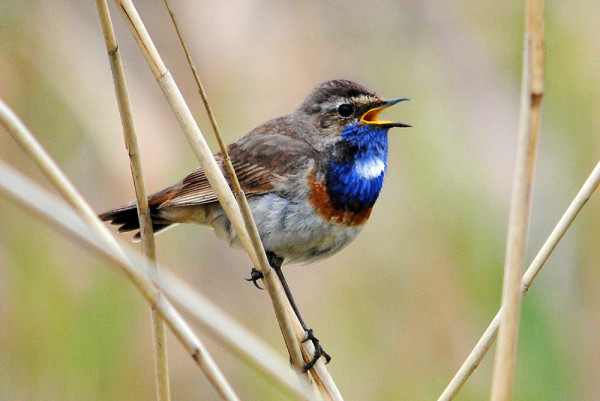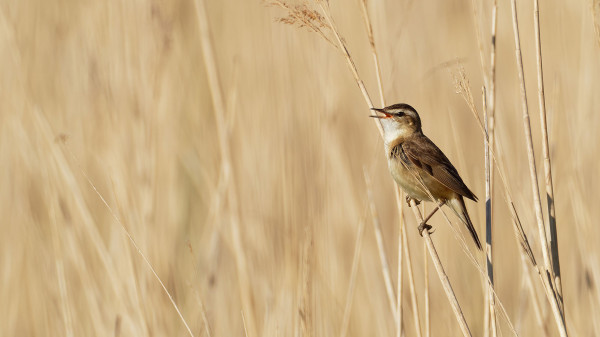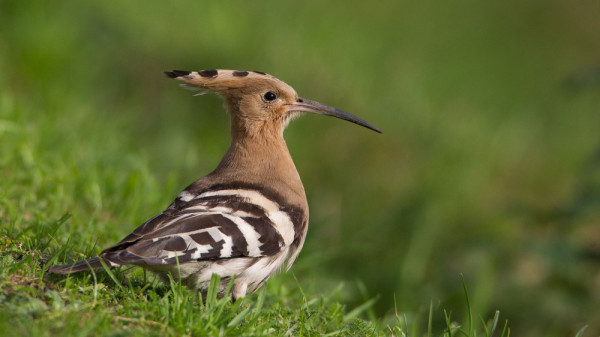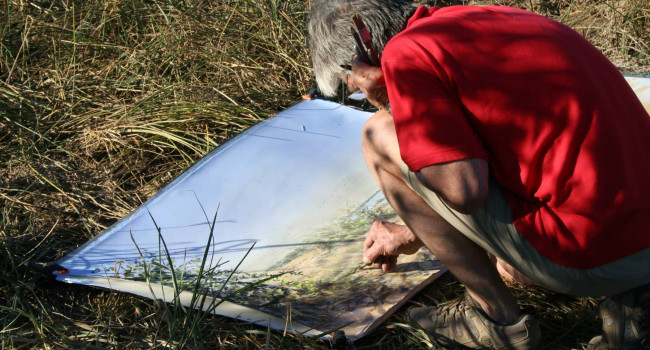
BirdTrack migration blog (7–13 April)
Scott’s role includes the day-to-day running of BirdTrack: updating the application, assisting county recorders by checking records and corresponding with observers.
Relates to projects
Although the wind direction was never southerly, the generally clear conditions did allow a steady trickle of migrants to push north. Chiffchaffs and Sand Martins in particular were reported from all corners of Britain and Ireland, with Chiffchaffs seemingly singing from any suitable habitat. Arriving in slightly lower numbers, but roughly at the expected time, were Sedge Warblers, Ring Ouzels, and Yellow Wagtails. Over the next couple of weeks, many more will arrive, some of which will stay to breed whilst others will simply pass through to Fennoscandia or beyond.
The first scattering of Pied Flycatchers and Redstarts arriving last weekend was a hint of what is to come – most of these birds typically arrive from the middle of April. Given that both these species have a westerly bias to their breeding strongholds it is hardly surprising that most reports came from western counties, although Redstarts were also reported further east.
The biggest flock comprised 200 birds that were tracked along the River Trent. This flock alone more than doubled the total number of Kittiwakes ever recorded in the county!
The Kittiwake movement predicted in last week’s BirdTrack Migration blog kicked off on 1 April with several single birds and flocks found at a number of inland water bodies. Around 80 birds were seen passing through Trent Valley Pits, Leicestershire and Rutland, with another flock of 16 at Grafham Water.
However, the biggest flock comprised 200 birds that were tracked along the River Trent. This flock alone more than doubled the total number of Kittiwakes ever recorded in the county! A few birds lingered throughout the week, but the majority had passed through by 2 April.

Also predicted in the last migration blog was an influx of white-spotted Bluethroats, and at least six birds were found during the week. Norfolk scored at least four birds, probably five, with singles also pleasing birders in West Yorkshire and Northumberland. This has to be a species that many a patch birder would love to find – is there a more stunning spring migrant?
Alongside the expected returning migrants, a few other scarcer species were found. The pick of the bunch was probably a Scops Owl in Cornwall. A small influx of Night Herons resulted in reports of six birds, with three in Ireland and three in England. Could the odd bird hang around and breed? We’ll have to wait and see.
Talking of rare breeders, the first Black-winged Stilts of the year were seen across southern counties of England and Ireland. Flocks of five in Cork and six in Cornwall were the biggest – let us hope they continue the recent run of successful breeding.
Looking ahead
April wouldn’t be April without showers, and the coming week looks to be a mixed bag of sunshine and rain with the wind coming from all directions. Just as for last week, this will mean migration will continue at a steady pace, perhaps interspersed with the odd pulse of birds arriving.
Common Scoter nocturnal flight call
Common Scoters spend the winter months not only around the coasts of Britain and Ireland but also the Atlantic coasts of south-west Europe and northern Africa. At this time of year, birds will be heading back north, and some of these flocks take a more direct route and pass straight over Britain rather than follow the coast.
Small groups can be found on lakes and reservoirs as they stop off along their migration, but flocks can also be heard passing over at night. Knowing their distinctive piping flight calls is a good way of picking up flocks as they pass overhead.

The wind direction looks set to swing to the south on Monday and Wednesday, so these could be the days that larger numbers of birds arrive. At this time of year, the main warbler species to arrive will be Whitethroat, Blackcap, Willow Warbler, Sedge Warbler, Reed Warbler, and Grasshopper Warbler.
Garden Warbler and Lesser Whitethroat should also be arriving, but these tend to arrive a week or so after the earlier arriving species.
It is not just warblers that will be arriving, though, and we can expect the numbers of Swallows, House Martins, Pied Flycatchers, Ring Ouzels, Yellow Wagtails and Redstarts to build throughout April and into May.
Seabirds start to arrive back on their breeding cliffs in early March, and as we progress through April more and more birds will arrive. Look out for Gannets, Puffins, Fulmars, Kittiwakes and Shags all pairing up for the breeding season.

Although we have not yet reached the peak of spring migration – typically early to mid May – there are still plenty of scarce birds to look out for alongside our expected summer visitors.
The next week could produce more rare herons, with Purple Heron being the most likely; with some areas of Spain experiencing continued drought, birds could be pushed out of their usual breeding areas and head to our shores in search of suitable habitats.
Other typical spring overshoots include Red-rumped Swallow, Black Kite, Hoopoe, Woodchat Shrike, and maybe another arrival of Alpine Swifts.
We’re thrilled to see our spring and summer visitors start to arrive across the UK.
Which species have you seen? Let us know in the comments below!
Add your records to BirdTrack
Don’t forget to let us know what you’ve found!
Adding your records to BirdTrack is quick and easy and gives us valuable information about bird migration.
Find out more








Share this page